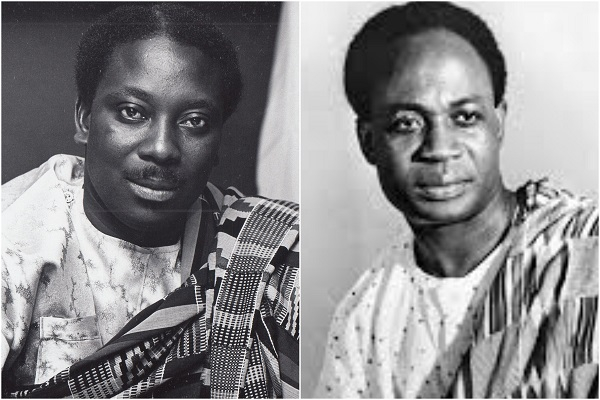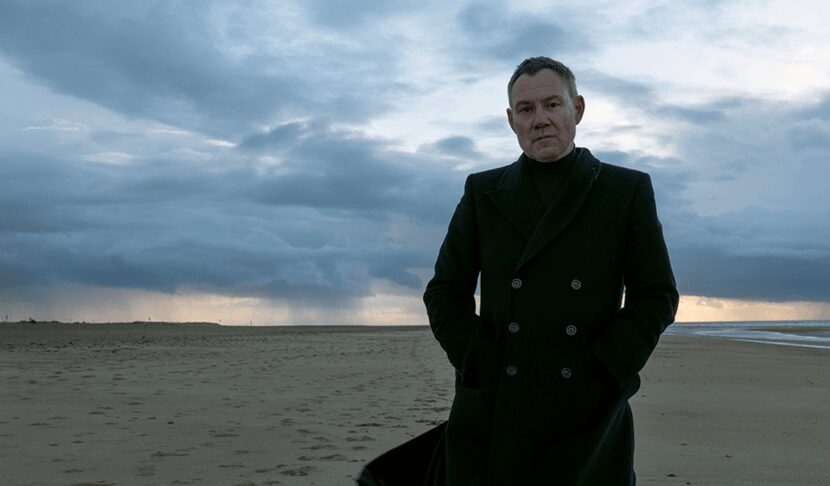As someone who sits in front of a screen all day in my living room, I am constantly looking for new music to listen to while I work. While I have a few genres that I find are particularly conducive to getting work done—ambient, dungeon-synth, and background video game music to name a few—variety is perhaps the best hack of all.
Unfortunately, it’s easy to hit the extent of what streaming services like Apple Music and Spotify can offer you. At some point, you have to start looking further afield.
I’ve had an Apple Music subscription since the service first launched, and I use the app every day. I listen to it while working, in the gym, and in the car. Though the library is plentiful, the service’s recommendations for certain genres have started to wear thin.
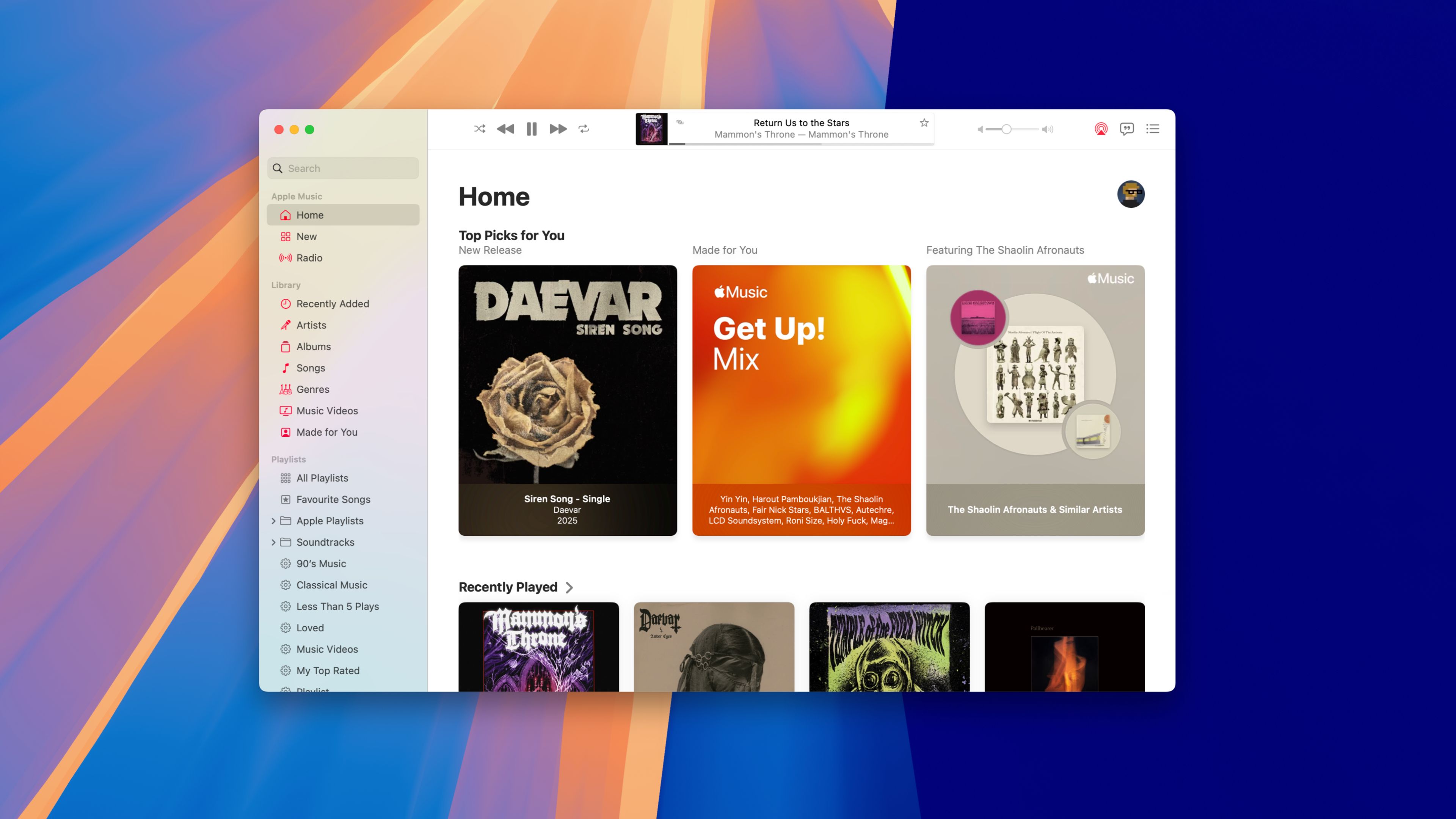
I’ll find that I’m constantly recommended the same artists from the same bucket of songs that are adjacent to whatever I’ve been listening to. In the case of smaller artists and fringe genres, the recommendations don’t work at all. I’m talking jarring, sudden changes in genre from downtempo zen-like textures to the kind of fast-paced commercial stuff you’d expect to hear during a cardio workout.
All too often Apple Music will just feed me more of the same, which isn’t always a bad thing (and has helped me discover plenty of good artists), but the app struggles to break new ground. This can be frustrating if you have broad tastes, which I think is the case for many people. While I haven’t had a Spotify subscription since I signed up for Apple Music, I’d bet that it has similar issues.
Related
The best thing about looking further afield is that external recommendations can still work with your existing music subscription. A lot of the music you might find on the journey is already on Apple Music, Spotify, or whatever it is that you’re using. At least, that’s what I’ve found to be the case.
It’s impossible to know which service has the largest catalog, but SoundCloud is estimated to be one of the largest with more than 200 million tracks to Apple and Spotify’s 100 million apiece. Bandcamp doesn’t disclose how many tracks are stored in its database, but it’s one of my go-to destinations for finding new music when I’m in the mood.
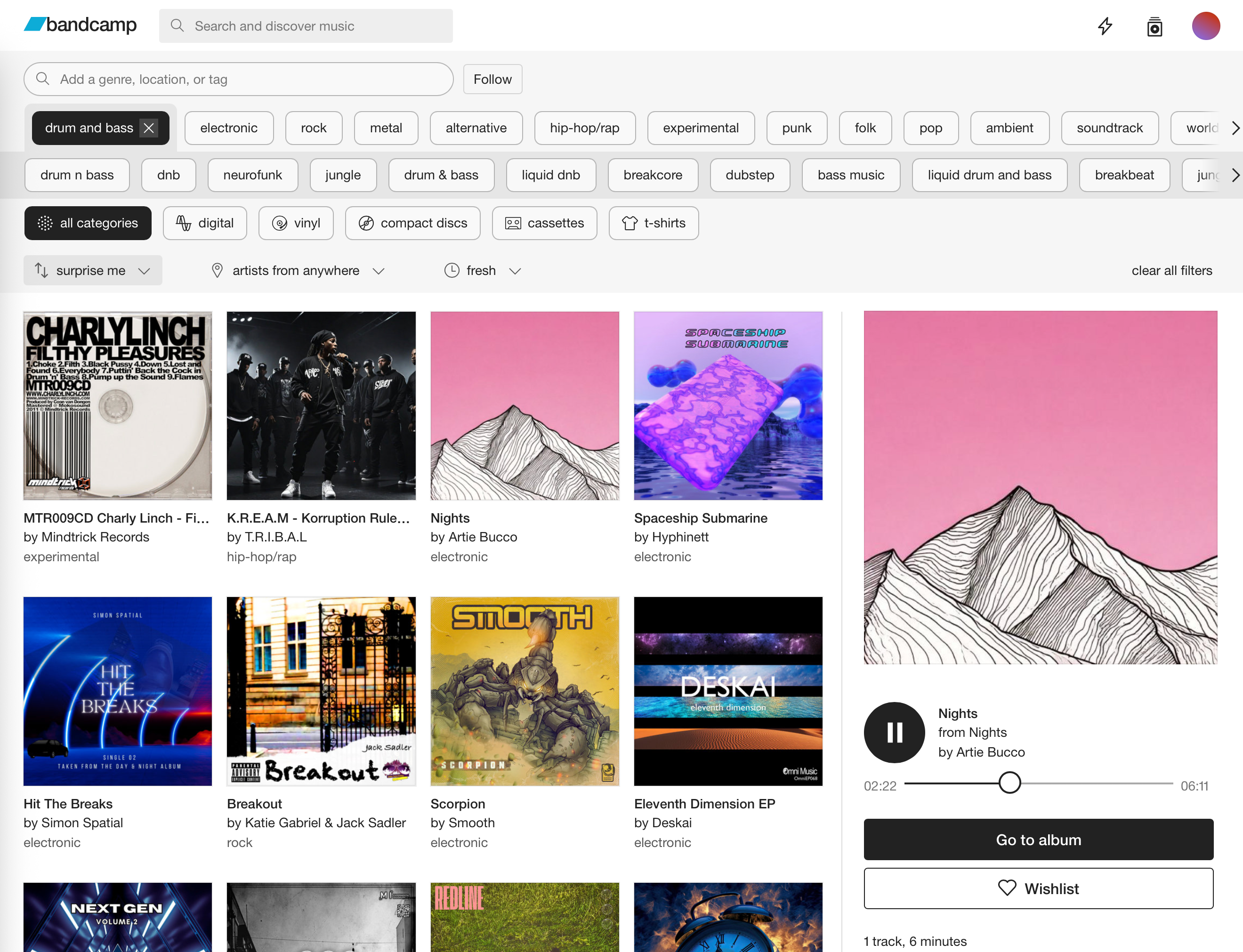
There’s no denying that the music on Bandcamp skews towards the alternative, the unsigned, and the niche. This also makes it great for anyone who is tired of the mainstream and major label recommendations that seem to take precedence on Apple Music and the like. Bandcamp isn’t strictly a streaming platform, it’s a shop. You can buy digital music, physical media like vinyl, and merchandise too. It’s a great way to support artists, but it’s also ideal for streaming music before you buy.
Head to Bandcamp Discover to see a list of the current best-selling releases. You can get a lot more creative by narrowing down your search with the genre filter. If a niche genre of choice isn’t there, click on the search box at the top and start typing it to add it to the mix. A single click of each cover will start playing a track. Add it to your wishlist to keep track of it, buy it if you love it, and move on to the next.
Take a moment to look up any new artists or releases on your existing streaming platform. Since these are best-sellers, most of them are in the more mainstream catalogs too. From here, you can start to explore your picks a little more deeply. I’m a big fan of checking out the record label, which should be linked on the artist’s page, to find similar stuff.
Bandcamp also lets you narrow down your search by locale. You can search for artists from your city, state, or country using the “artists from anywhere” drop-down. There’s also a “surprise me” filter under the “best-selling” drop-down which surfaces items you perhaps wouldn’t otherwise see.
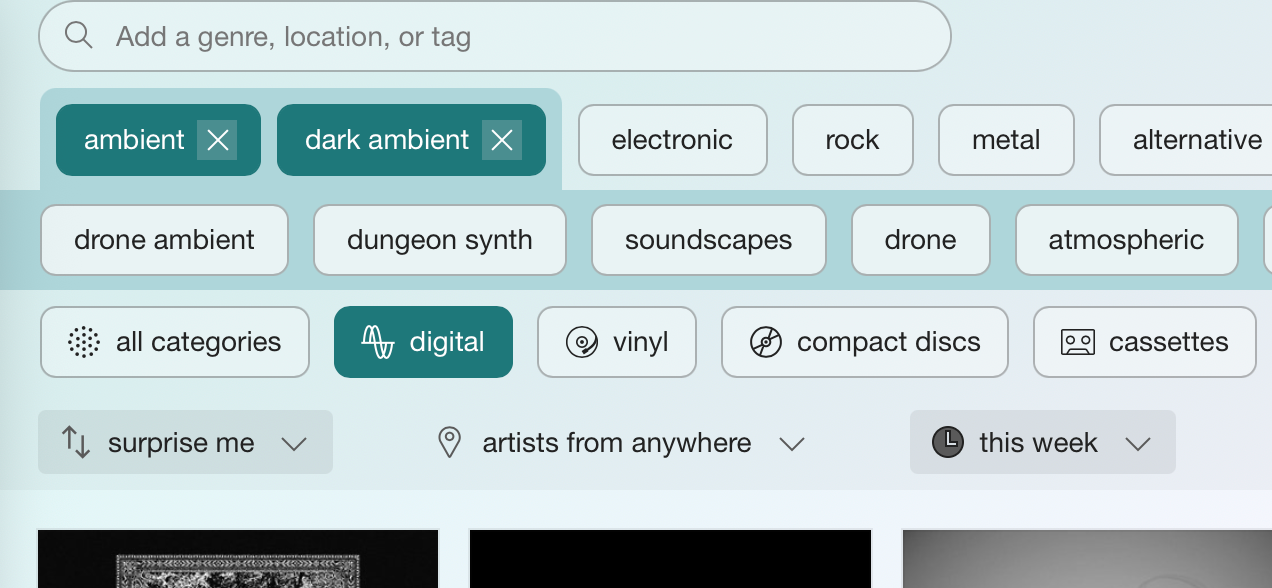
I’ve been browsing Bandcamp for around five minutes this morning while writing this, and I’ve already discovered three new artists that I’ll follow up with on Apple Music. These are releases that Apple Music would likely never have surfaced. Now I’m desperately trying to drag myself away so I can focus on work again.
I’m increasingly of the opinion that there are only two valid reasons to open Facebook in 2025: to find bargains on Facebook Marketplace, or to discover which bands and artists are coming to town. There’s something alluring about finding a new band, discovering you’re a fan, and having the opportunity to see them perform live within a matter of weeks or months.
Facebook’s events page is pretty good for this, especially if you’ve fed the algorithm some data about what you like. The easiest way to do this is to click “Interested” or “Going” on a few relevant Facebook events. You’ll then be suggested similar events at the same venues, from the same promoters, or based on how your tastes align with other attendees.
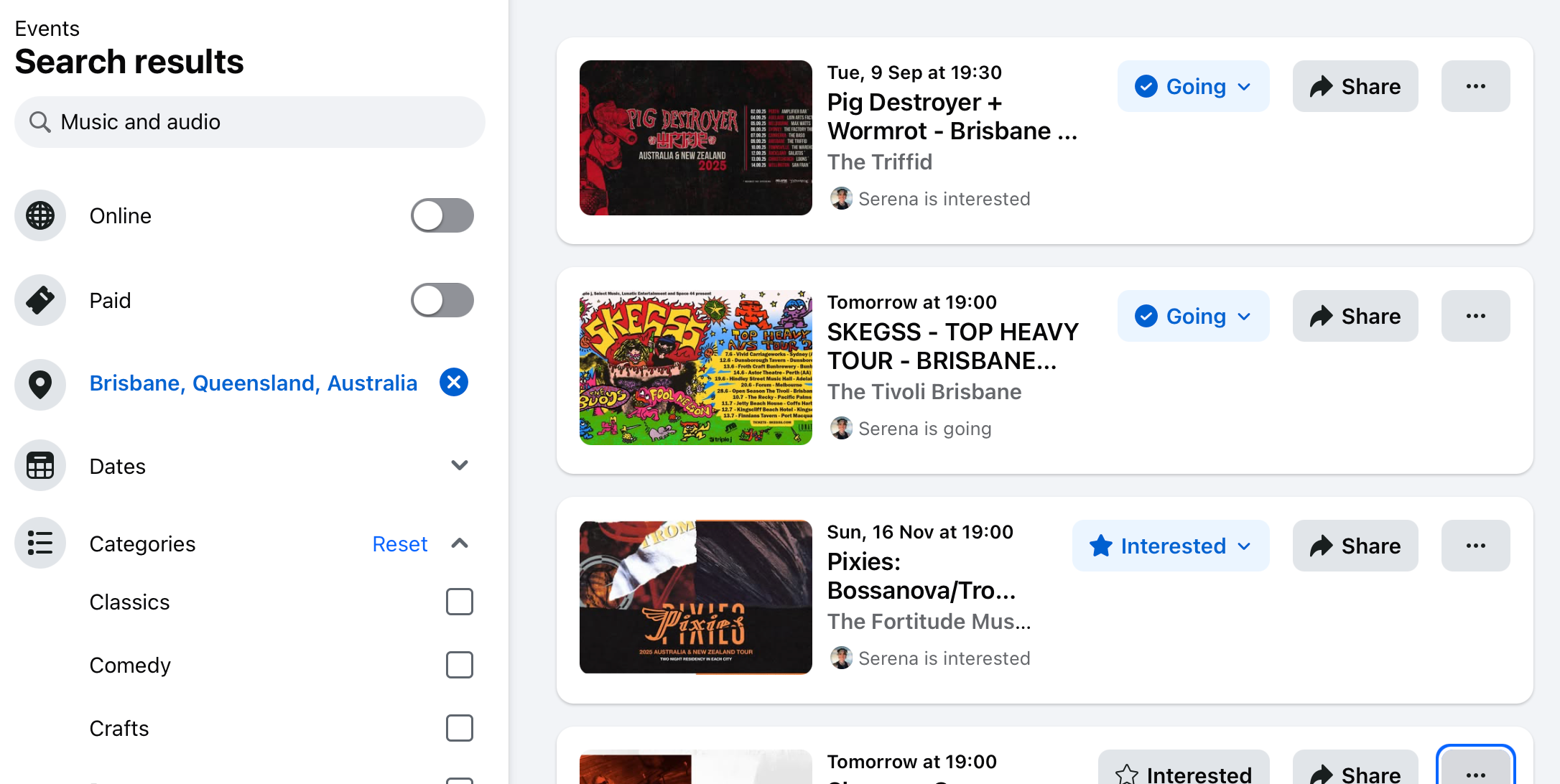
Surprisingly, I’ve had great luck with Facebook’s suggestions. There’s a lot of variety in these events, from smaller emerging artists right through to headlining showstoppers you’ll see posted up on billboards around town. Since I’ve started using Facebook more in this way, I get a lot of these recommendations in my news feed too.
Of course, you should also check out local promoters and venues directly to see who’s coming to town.
One of my favorite websites from the days when Flash dominated the web was Ishkur’s Guide to Electronic Music. While the original website depended on Macromedia’s browser plugin, Ishkur’s Guide has been revived as a modern and responsive website.

Though subjective and dripping in snark, the guide presents a fascinating chronological guide to the history of modern electronic music. It includes examples you can listen to, descriptions, related genres, standout artists, and whole mixes to enjoy.
Along the same lines is Every Noise at Once, a website that performs a similar task except for as many genres as possible. The website presents a tangled web of styles accompanied by varied recommendations. It’s not a history lesson, but it’s still an absolutely fascinating rabbit hole to fall down.
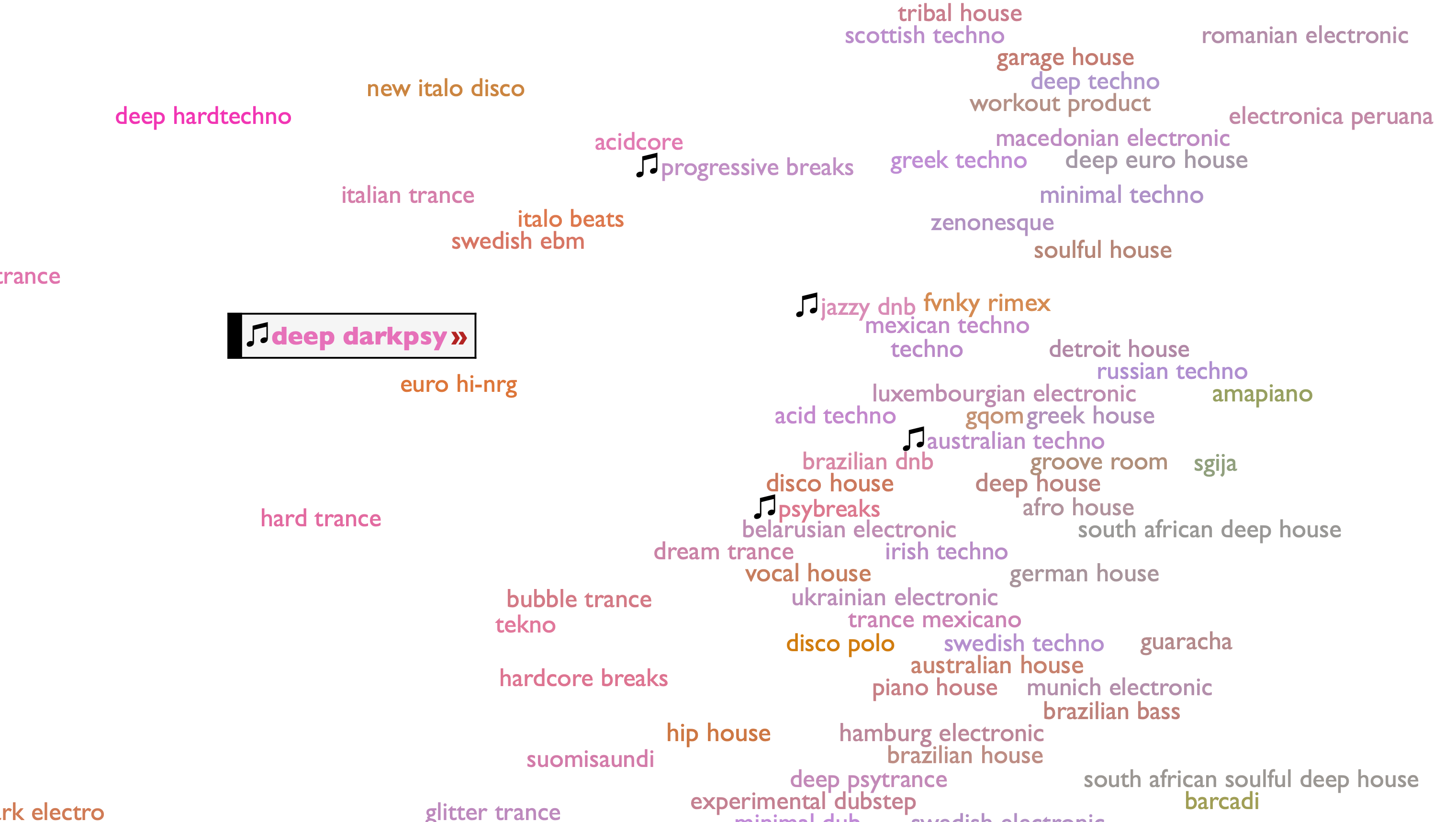
Click on a genre to hear a sample pulled from Spotify, then click on the arrow next to the artist to explore the genre more closely. You’ll get a full list of related artists that you can explore from here. You’ll also see a web of related genres, each of which acts as a signpost to more things you might like. You’ll discover genres you never knew about, and artists you never knew you loved.
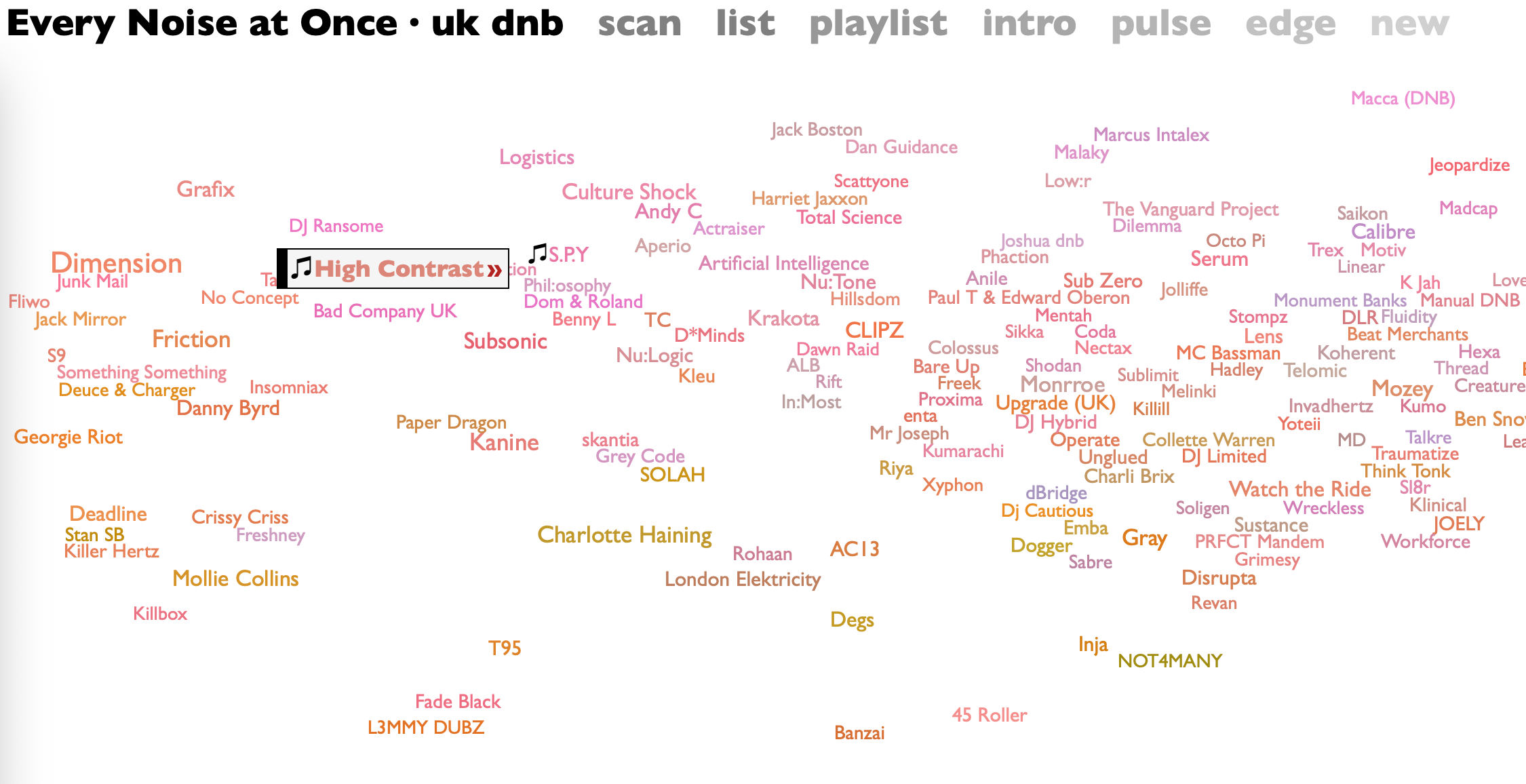
Since the website uses Spotify for its samples, it shouldn’t be too hard to add these artists to your existing collection. Be warned, this is an absolute time-sink of a website that’s hard to put down once you pick it up.
I’d hazard a guess that you probably don’t listen to the radio too much anymore. This is a shame, since if you have an Apple Music subscription you get access to the whole TuneIn radio catalog within the app. This can be great for discovering new music, or simply letting someone else determine what you should listen to.
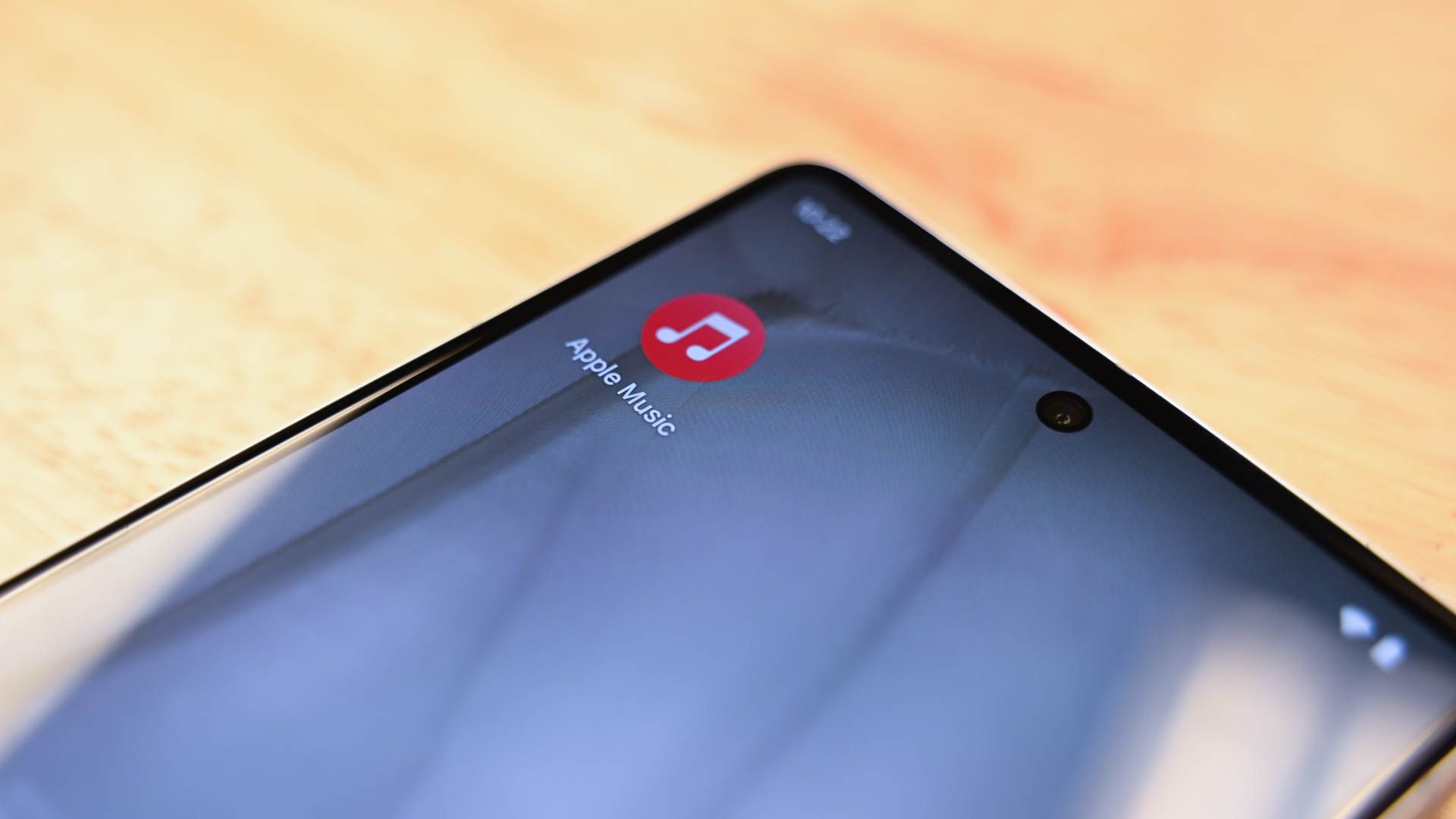
Related
11 Apple Music Features You Should Be Using
Paying for Apple Music? Get your money's worth by using all the features the service has to offer.
Unfortunately, radio station discovery isn’t Apple Music’s forte. Enter Radio Garden, a service that puts thousands of radio stations at your fingertips, presenting them all on a big interactive map. You can use the service for free via a web browser, or download the relevant iPhone and Android apps (also free, but with limitations and more ads).

Click around the map to find radio stations, and save your favorites for later listening. The app features everything from talk radio to small stations specializing in local music. Sometimes it can be difficult to ascertain the artist and song that’s currently playing (Shazam didn’t help with either the Haitian or Rwandan stations I clicked on), but sometimes accessing the radio station website—which is linked where available—will show you a list of recently played songs.
For a slightly different look at world music, check out Radiooooo. Not only does the service let you explore different music by country, you can even jump back in time to hear examples of music coming out of the region between the 1900s and the modern day. There are also buttons to toggle between fast, slow, and weird stuff (or a mixture of all three).

Every track played is listed, so you can (hopefully) find more and dig deeper at your own leisure. The service requires an account in order to use and features ads and limitations for free users (and apps for iPhone and Android). You can upgrade to the premium tier for $5 per month (or $50 per year) to get the full suite of features: skipping, rewinding, all countries, music organization, and curated playlists.
Thanks to the internet, we have access to more music than we could have ever dreamed about 20 years ago. The only problem is finding it. Wondering which streaming service is right for you? Check out our comparison between Apple Music and Spotify.





